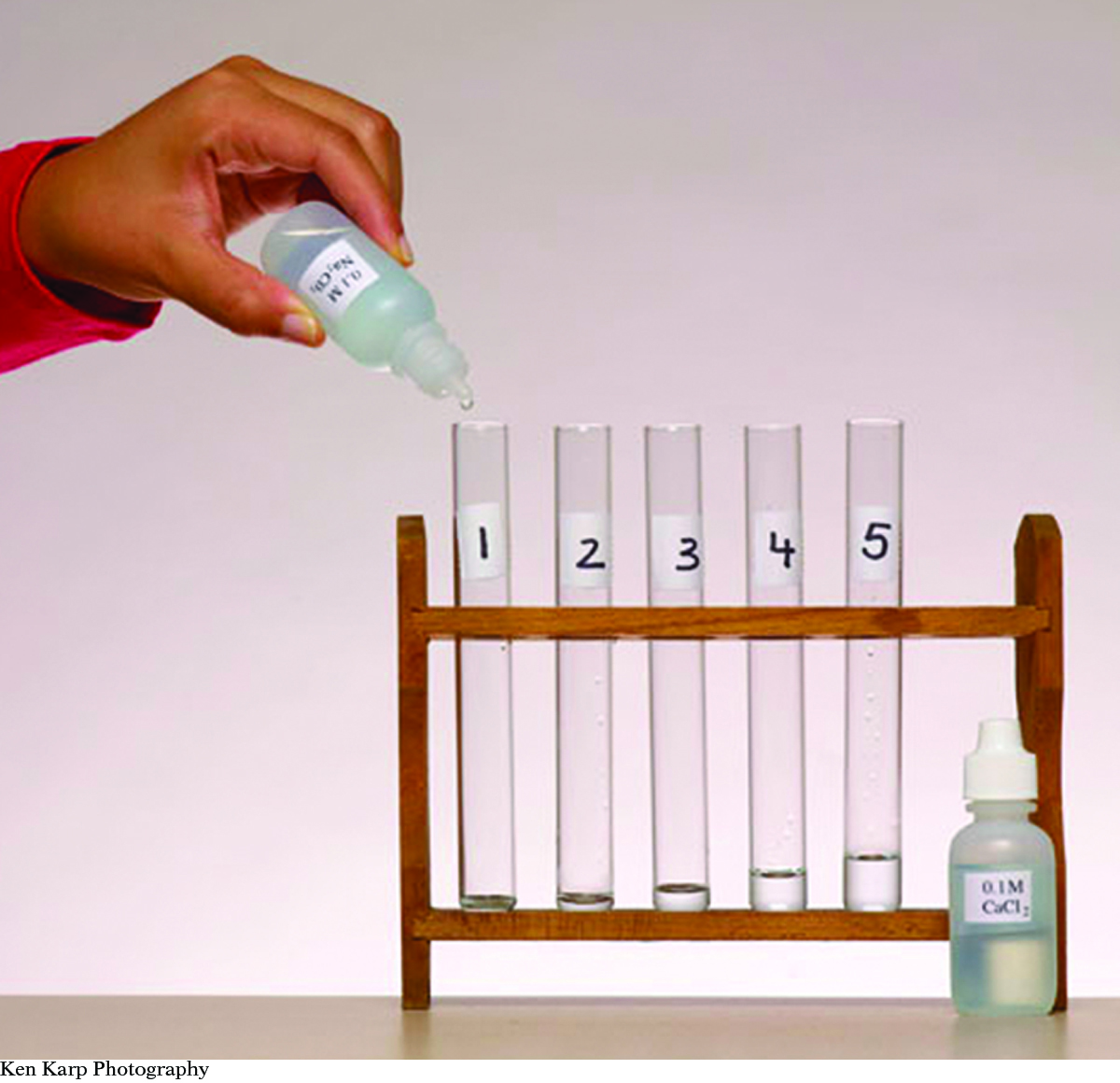Featured LAB: Mole Ratios
Featured LAB
461
Mole Ratios
Purpose
!
SAFETY
Instructions
Safety goggles must be worn at all times.
To examine how the ratio of reactants affects the amount of products.
Materials

12 × 75 mm test tubes (10)
test-tube rack
marker (to label test tubes)
2 dropper bottles with 0.10 M solutions of calcium chloride, CaCl2, and sodium carbonate, Na2CO3
Procedure
Number five small test tubes from 1 to 5.
Add drops of 0.10 M CaCl2(aq) and 0.10 M Na2CO3 to the test tubes as indicated in the table below.
Swirl each test tube gently to mix the reactants. Allow the solids to settle for about ten minutes while you complete the table and continue the analysis.

Observations and Analysis
Write the balanced chemical equation for the exchange reaction of aqueous calcium chloride with aqueous sodium carbonate. Predict the ratio of moles of CaCl2(aq) to Na2CO3(aq) that will produce the maximum amount of CaCO3(s).
After the solids have settled, determine which tube has the most CaCO3(s). Identify the ratio in the table that resulted in the largest volume of solid.
Making Sense How do the balanced chemical equations compare to your observations?
If You Finish Early Suppose that you mix calcium chloride, CaCl2(aq), with sodium oleate, NaC18H33O2(aq). What products do you expect? What ratio of drops would give you the largest amount of precipitate? (Note: One product is calcium oleate, commonly referred to as soap scum.)